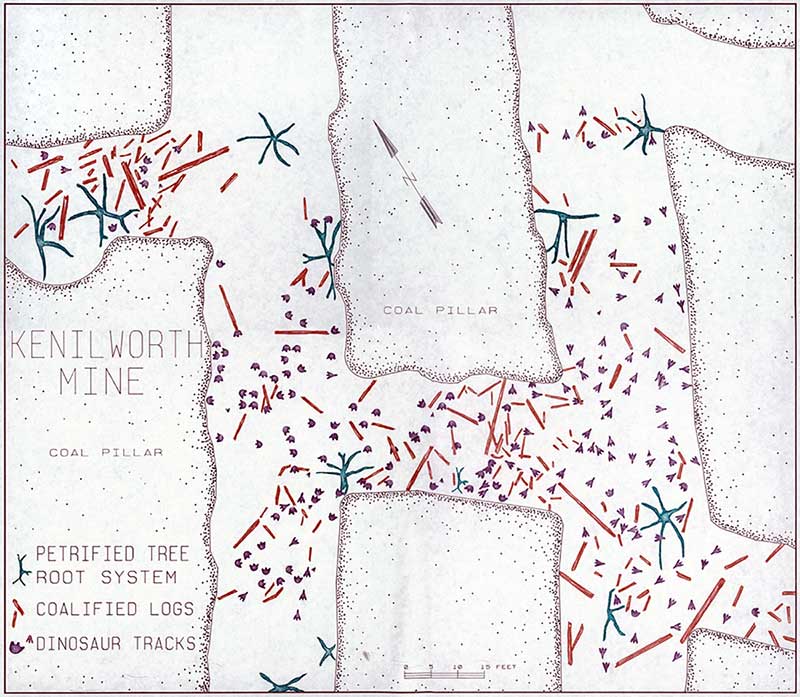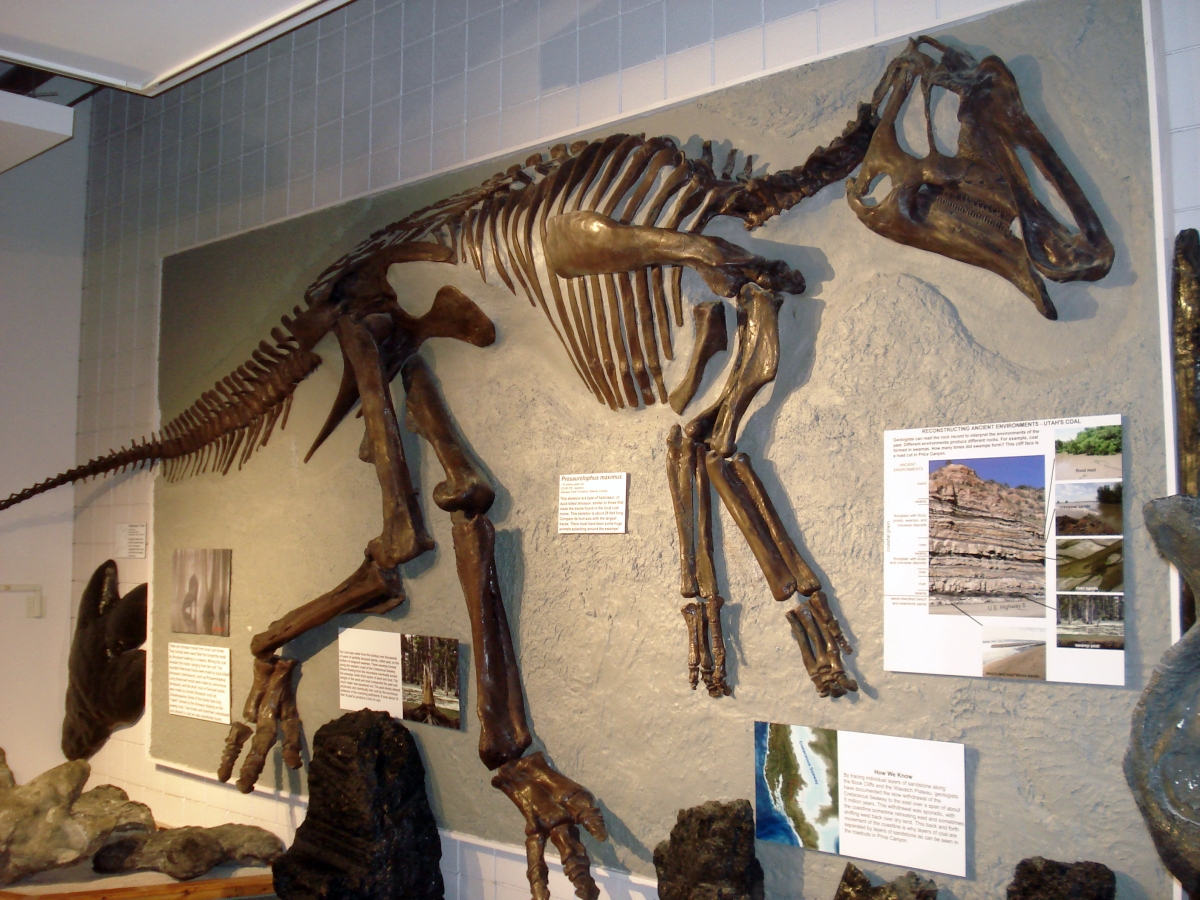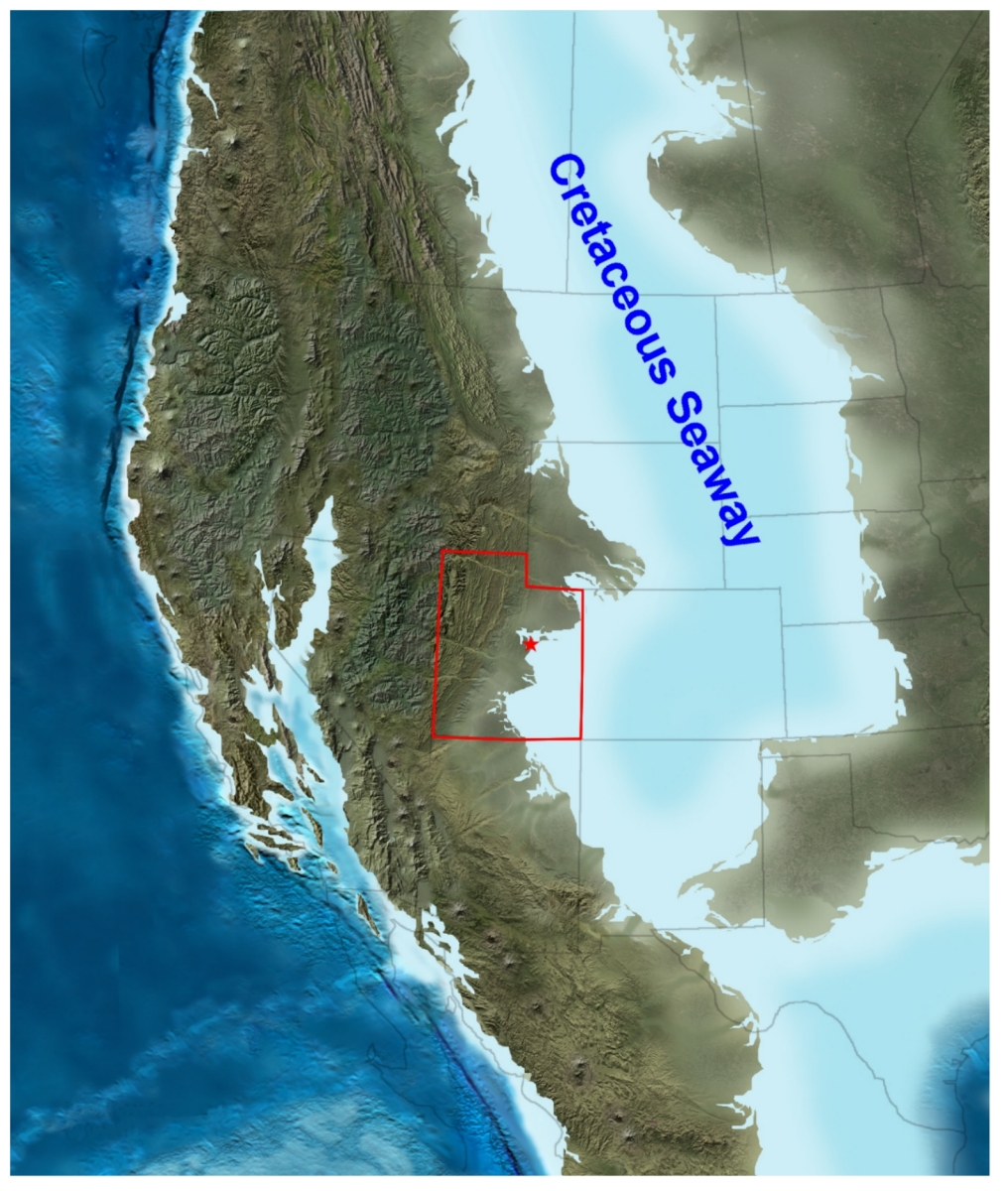Coal Mines
Coal Swamp Dinos
When miners began removing coal from underground mines in the Book Cliffs, they began uncovered three- and four-toed dinosaur tracks that looked like the animal had been walking on the ceiling. In reality, they were seeing the underside of the footprints hanging from the ceiling. They formed when sand, from floods, filled the footprints made by dinosaurs walking in a swamp. The wide, rounded three-toed tracks were made by duck-billed dinosaurs (hadrosaurs), such as Prosaurolophus. Long three-toed tracks were made by carnivorous dinosaurs, and short, four-toed tracks were made by horned dinosaurs, such as Chasmosaurus. Some of the tracks have long "heels" formed by the dinosaur slipping on wet swamp mud. On rare occasions, dinosaur bones are found and these confirm the identity of who was making footprints in the swamps.


Mapping of the tracks on the mine ceiling gives a glimpse into dinosaur behavior. The abundance of hadrosaur tracks suggests that these were herding animals, possibly for group protection. Most of the tracks at the Kenilworth mine indicate that the hadrosaurs were moving south, perhaps on a seasonal migration. The distance between the tracks also indicate the animals were walking leisurely, and some tracks seem to have been of animals stopping to feed on trees. These tracks paint a different picture from the killing and fighting portrayed by dinosaur artists.
The coal was made from the buildup over thousands of years of partially decayed plants, called peat, on the bottom of stagnant swamps. These swamps formed along the western coast of the Cretaceous Seaway in an environment that look like the bayous of Mississippi and Louisiana. Rivers flowing from distant mountains to the west eventually buried the swamps under thick layers of sand and mud. The weight of the sand and mud compacted the peat and much water was squeezed out. The peat slowly altered physically and chemically into coal by the enormous pressure of the overlying sediments. It took about 10 feet of peat to produce a foot of coal.
Dinosaurs of the Coal Mines
- *Prosouralophus
- Chasmosaurus
*On display at the museum.
About the Coal Mines
The Book Cliffs are a long line of cliffs that begin east of Grand Junction, Colorado, and wind their way west to Green River, Utah. There the cliffs turn north and wrap around Helper and Price, Utah. Technically, the cliffs continue southwest on the west side of the San Rafael Swell and end near where Interstate 70 enters the Swell. The Book Cliffs are World famous among geologists for recording the shifting west coast of the Cretaceous Sea. This sea divided North America 100 million to 73 million years ago.


By tracing individual layers of sandstone along the Book Cliffs and the Wasatch Plateau (west part of the Book Cliffs), geologists have documented the slow withdrawal of the Cretaceous Seaway to the east over a span of about 5 million years. This withdrawal was sporadic, with the coastline sometime retreating east and sometimes shifting west back over dry land. This back and forth movement of the coastline is why layers of coal are separated by layers of sandstone as can be seen in the roadcuts in Price Canyon.
The coal was made from the buildup over thousands of years of partially decayed plants, called peat, on the bottom of stagnant swamps. These swamps formed along the western coast of the Cretaceous Seaway in an environment that look like the bayous of Mississippi and Louisiana. Rivers flowing from distant mountains to the west eventually buried the swamps under thick layers of sand and mud. The weight of the sand and mud compacted the peat and much water was squeezed out. The peat slowly altered physically and chemically into coal by the enormous pressure of the overlying sediments. It took about 10 feet of peat to produce a foot of coal.
Coal mining became economically important for central Utah in the first half of the Twentieth Century. Before mining was mechanized, much of the work was done by hand, with pick and shovel. Today, coal is mined by various machines, which you can see at the Western Mining and Railroad Museum in Helper (on Main Street). Until the mid-1970s, almost half of the coal was left as pillars to support the roof. Now, longwall mining allows complete removal of coal by a large cutter (called a shearer) mounted on a track. As the shearer moves back and forth cutting the coal, the coal falls onto a conveyor belt and carried out of the mine. As the track is pushed forward on hydraulics, the roof is allowed to collapse behind hydraulic roof supports called shields that protect the miners. This method of mining is computerized and is both safer and recovers coal more efficiently; unfortunately, it also means fewer miners are needed.


